Chalisée Naamani presents fashion
Chalisée Naamani’s painterly installations expose what surrounds her today: the fashion-of-the-day that is not necessarily fashionable.
Everybody knows there are true gems hidden at the bottom of the Youtube ocean. One of them is the speech of Italian fashion designer Roberto Cavalli at Oxford University. Typical of the unfortunate blends only the web can produce, Cavalli and Oxford together are truly painful to watch. The British institution par excellence cannibalizes the fashion representative Cavalli, cunningly transforming it into a clown for the fun of the high-brow. At the same time, the hyper formal context allows the designer to give the worst of himself: true mass media entertainment of tears and laughter, worthy of the cheapest television program and delivered in bad English with no trace of self-consciousness. A note by artist Chalisée Naamani (born Paris, 1995) reminds us that fashion should be taken more seriously than that. She reminds us that the sociological and ecological implications of the industry make things less mindless than Cavalli at Oxford. We will see how this plays out in her artworks.
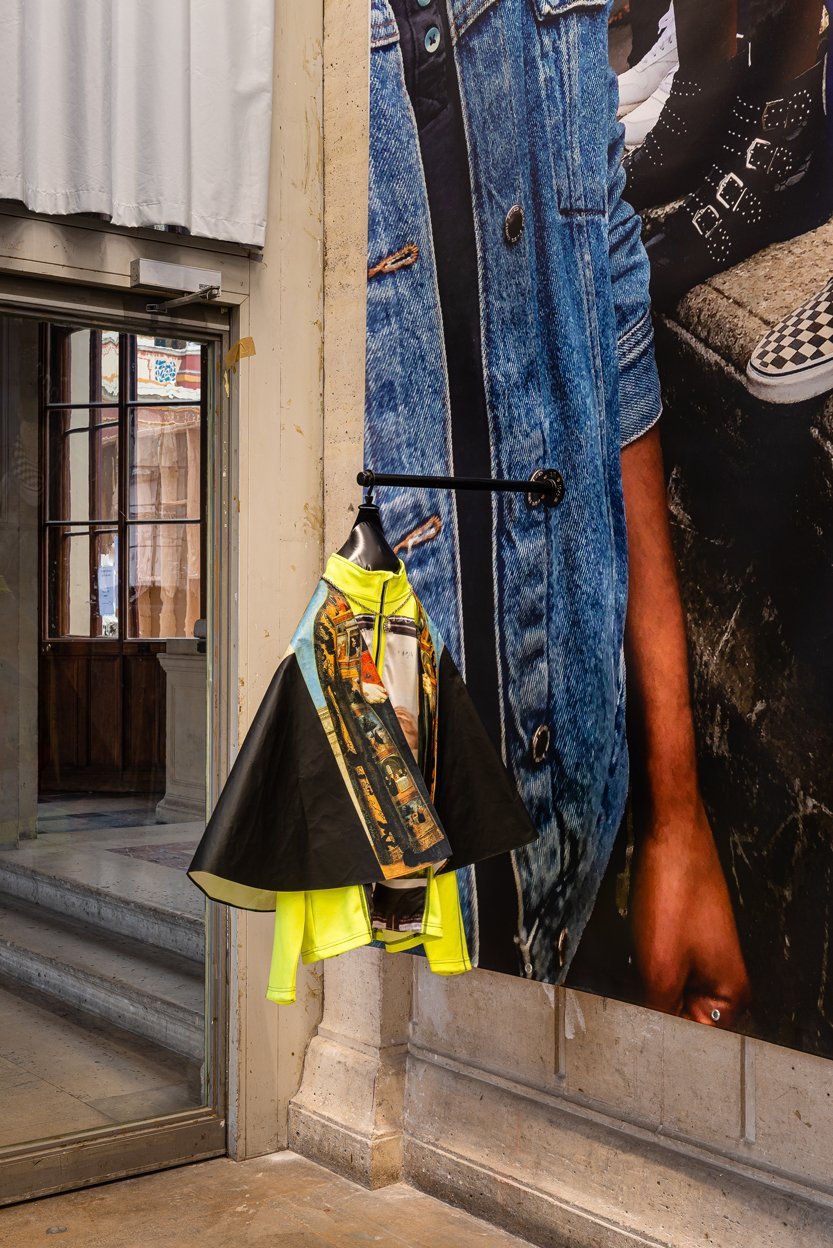
To be sure, we don’t want to be a wet blanket. Let the fans of Zoolander and Bruno be amused if they so wish (and if there are still any left out there). The questions for the fashion industry raised by Chalisée Naamani are here to stay nevertheless. Despite her love for designing clothes, the young Parisian artist says she never wanted to associate her name with a brand. Her view on the industry is critical, putting forward a few points that are political and personal at once. For example, she says: “I have always dreamed of dressing men. Fashion has contributed to the emancipation of women, and to achieve this fully I am convinced that men’s fashion should be revolutionized.” She continues: “With the ecological troubles of today, there is a huge responsibility for the fashion industry, which is one of the most polluting on our planet. I take this issue very seriously.”
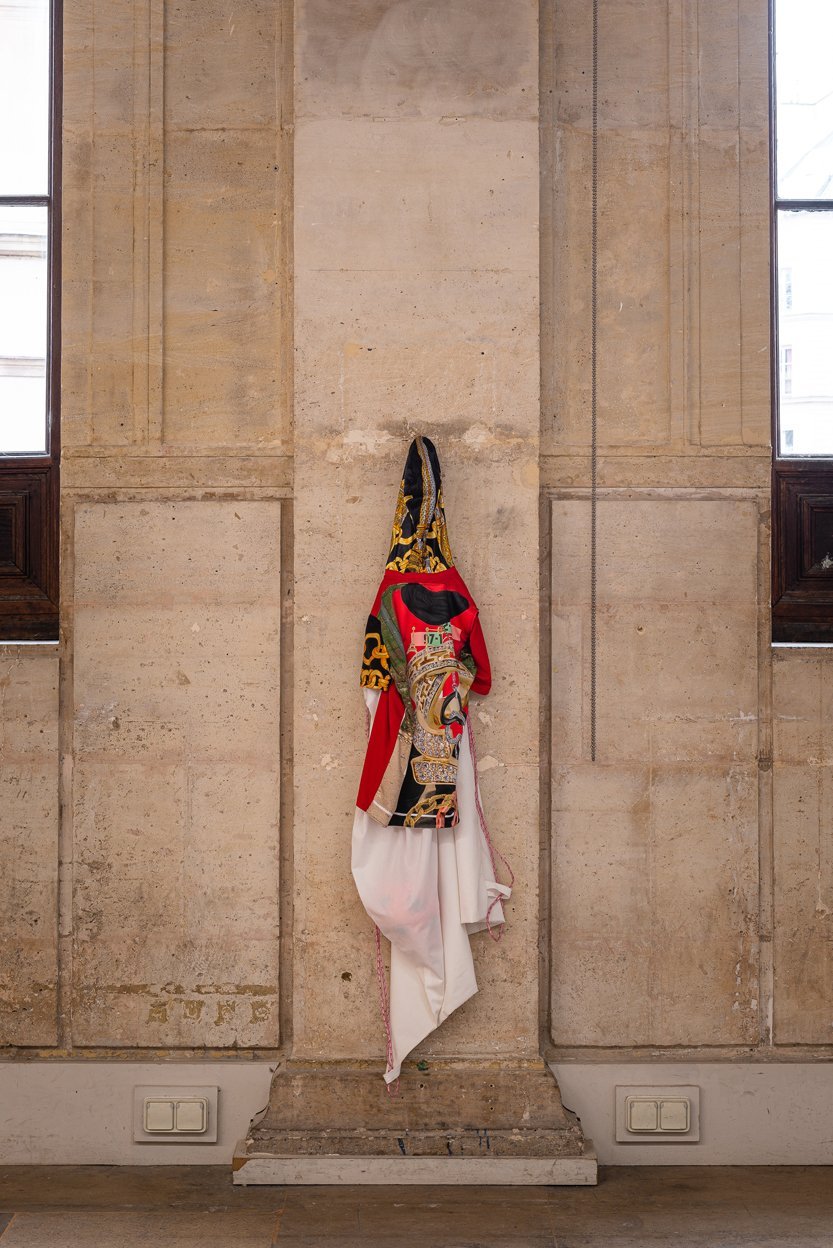
Her tones are firm but not angry. Chalisée Naamani doesn’t play the role of the grumpy moralizer. After all, how can we really bash something we’ve loved since childhood. To give some context, she tells us how the collection of Persian rugs at her Iranian parents’ place in Paris was greatly inspirational, a textile initiation perhaps. She confirms she grew up in a culture of “proper dressing,” where any occasion away from domesticity, even the most banal, asked for specific clothes and features. In the end, she confesses: “As a kid, everyone around me always felt I would become a fashion designer. It was too easy, so I didn’t.” Visual art is what follows.


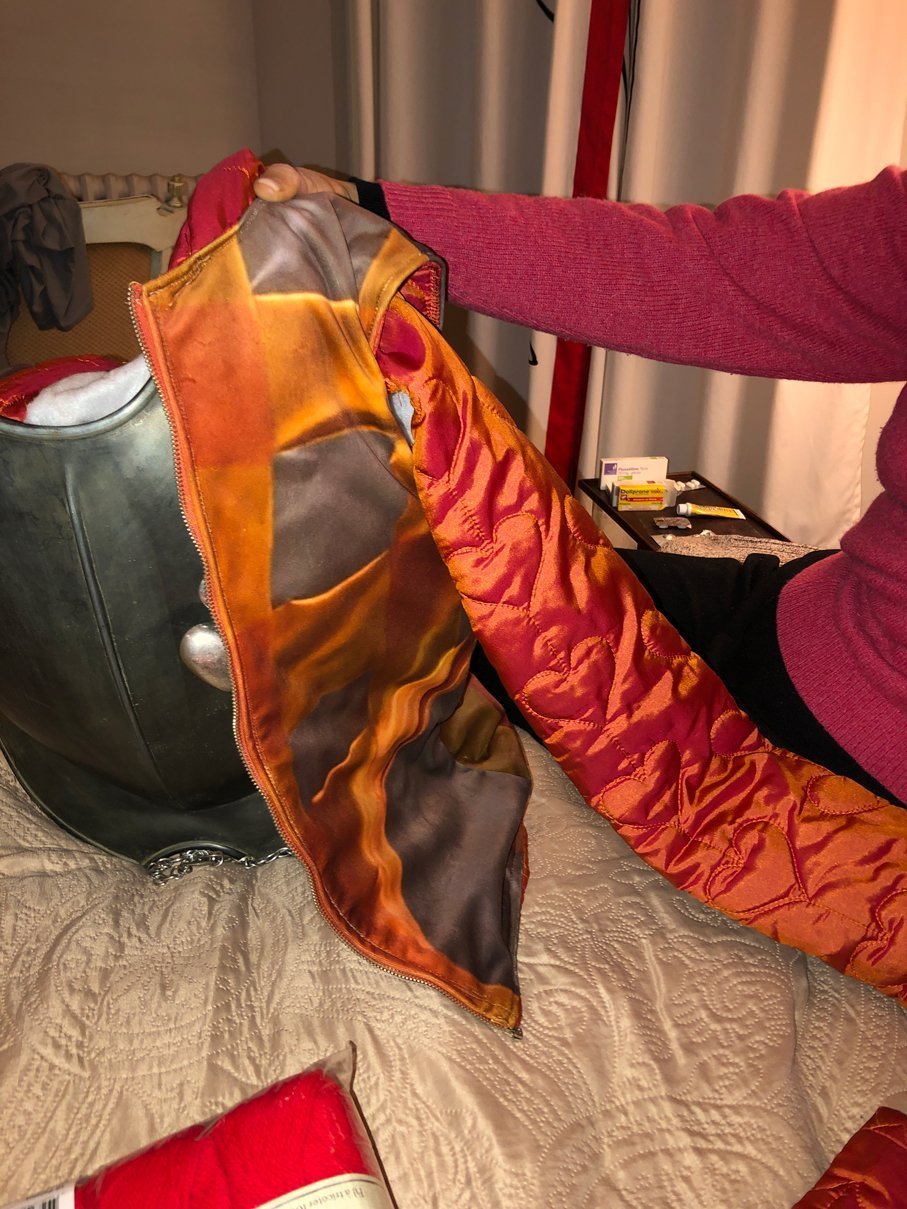
Applied artists are often amazed and terrified by the freedom granted to visual artists. This freedom of art, away from laws, commissions, seasons, functionality, etc. is often brought forward as the very difference between art and applied art. Freedom would be what makes an artwork an artwork. Chalisée Naamani doesn’t think so. She goes against the grain and appeals to the concept of presentation: a piece of clothing can become a painting if presented in a certain way. But what is this presentation exactly? It has to do with composition, painting, and forbidden references.
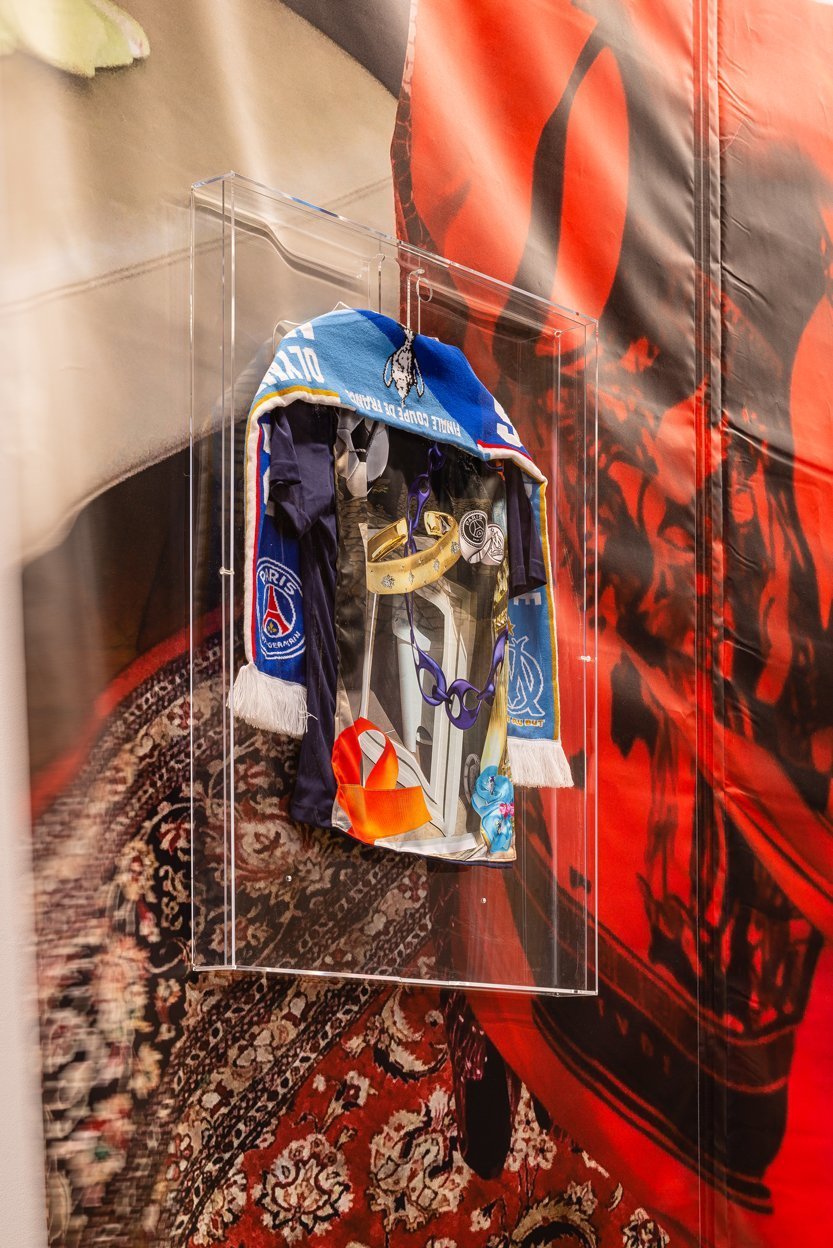
Chalisée Naamani studied at the prestigious Beaux-Arts de Paris. She freshly graduated from the painting atelier, although she was the only one there who never actually painted. There are no canvases in her entire body of work, which nonetheless she considers absolutely painterly. There is no paradox here but the realisation that painting can also mean attention to composition, or the creation of a unique piece away from the seriality of fashion. Her installations are formally balanced despite their maximalism. They have the aura of singularity allowed by the arts plastiques, maybe even those of quintessential painters. As the artist confesses: “Picasso and Bonnard are important references for me. They were forbidden to me at school but their paintings followed me during my adolescence, in the construction of my gaze and my artistic sensitivity. When I discovered that Picasso described Bonnard’s painting as ‘a medley of indecision,’ I understood their difference but also why I was attracted by the work of both.”
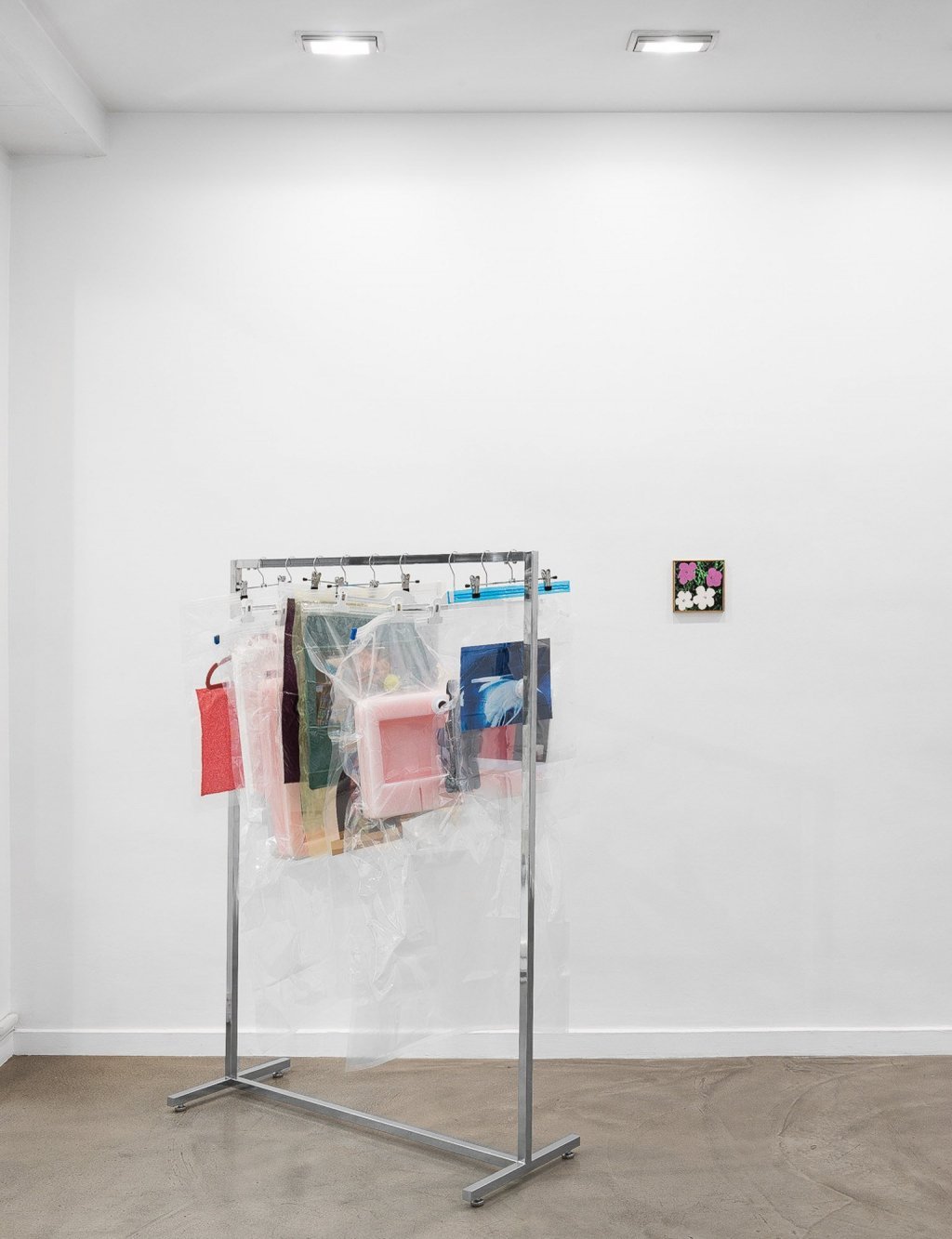
Alongside fashion, Chalisée Naamani’s painterly installations are full of photographs that are not photography. No paradox here either though, just another material for the process of presentation described above. Through photography, fashion becomes fashionable, but not in a short-sighted sense of hype. Rather it is about exposing what surrounds the artist today: the fashion-of-the-day that is not necessarily fashionable. In the artist’s words, photographs are there to bring on the visual culture in which the artist “evolves,” going from Renaissance paintings to Kanye West to street vendors under the Eiffel Tower.
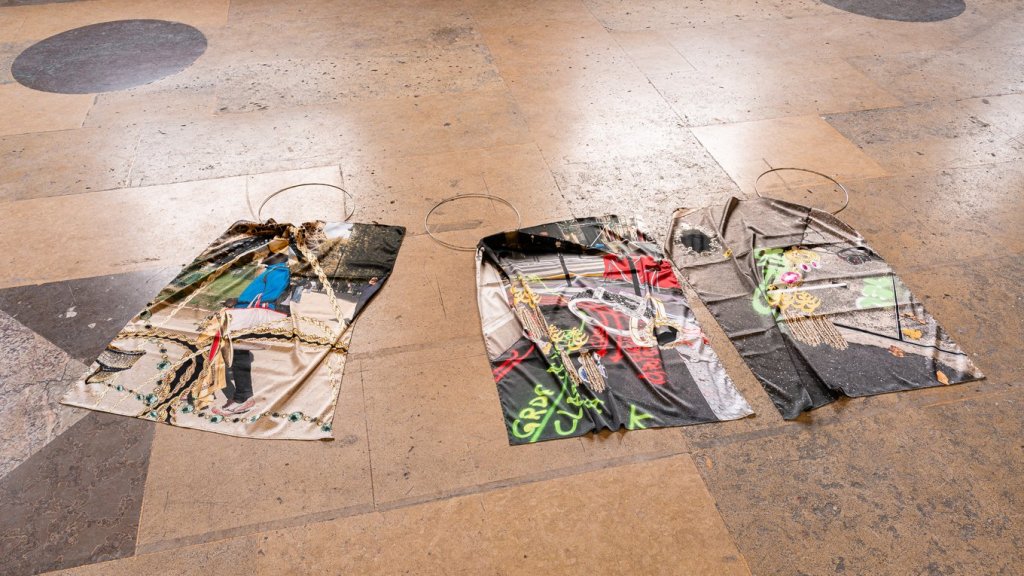
As artist Cinzia Ruggeri declared in the 1980s while exposing her newly designed series of dresses, “the only way to survive is not to have a temporal identity.” These words resonate in Chalisée Naamani’s effort against fashion seasonality: “I also realized that textiles are a very powerful memory vector, as strong as photography. In the era of fast-fashion and the obsolescence linked to consumption pushed to its climax, I want to offer lasting value to my pieces.” Naamani pinxit.
[Read more about Cinzia Ruggeri’s take on art here. Ed.]
[A solo exhibition of new works by Chalisée Naamani opens on April 8 at Ciaccia Levi in Paris. Ed.]
February 11, 2021
